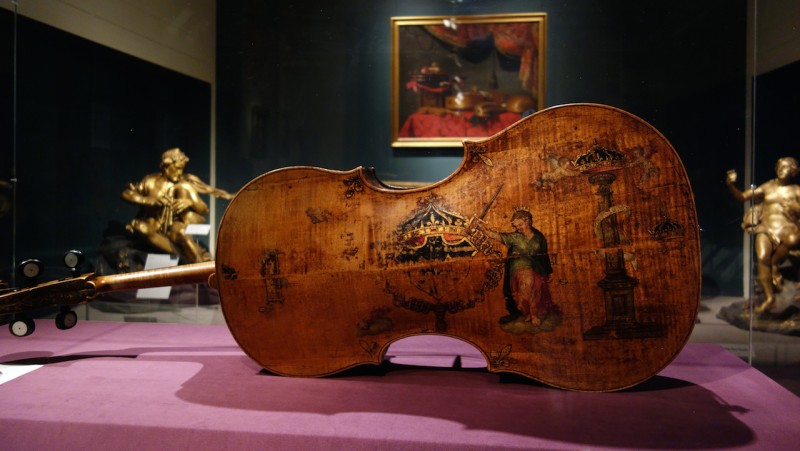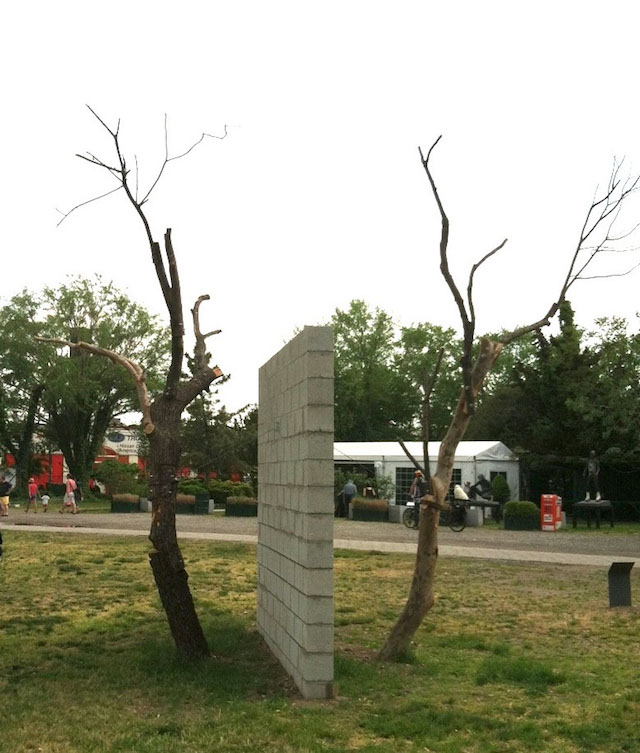El primer cello
Vale, no será el primero, sólo el más antiguo conocido. Pero qué bonito:
Andrea Amati constructed the instrument in Cremona, Italy, and through his sons several generations would make the Amati name integral to stringed instrument evolution. “He influenced all of the violin makers up to this day, including Stradivari and Guarneri,” said Ken Moore, Frederick P. Rose curator in charge in the Department of Musical Instruments. “He is credited with being the father of the modern violin. Before him there were all sorts of shapes and sizes, and he standardized things and also made templates so he could produce the instruments a bit faster. He really was the one who created the formula for violin making to this day.”
Minions
Siempre hay alguien dispuesto a decir lo que tú piensas de una película. El primer párrafo es perfecto:
Bad movies are one thing. We know how to deal with them. But Minions isn’t bad, exactly. It’s perfectly neutral – the most impressively flavorless movie in many a long age. I’ve found preparing to review it has been something of an exciting race against the clock: would I be able to finish writing before every last memory I had of the experience of watching it had evaporated away? Given how hard it was to remember the beginning of the movie by the end of it, dear reader, I was not optimistic.
Dos árboles en equilibrio
De las tres, me ha gustado mucho esta escultura de dos árboles perpetuamente tirando de un muro de jardín. Que los árboles estén tan «construidos» como el muro me parece que le da toda la gracia.
Gabriela Albergaria’s “Two Trees in Balance” (2015) presents an aesthetically formal conflict between a garden wall and two improvised elements of nature. Neither enclosure nor sanctuary, as gardens have historically been, the two composite trees, made from salvaged pieces of wood, are suspended in perpetual tension as they pull against either side of a 10 foot concrete block wall, an evocation of the forces of gravity and organic growth that tend to pull down the structures humans erect.
The artist propagates her idea from found branches and trunks gathered throughout the city and reconstructed into the semblance of trees with the aid of bolts and metal straps. Grafting, a common horticultural technique of cutting and fusing to reproduce multiple plants from a single rootstock, is evoked by Albergaria’s construction methods. The reconstituted trees recall the long tradition of gardening that in consort with architecture, served the psycho-socio-political need to define and demarcate nature into domesticated and wild zones.
Origen: Vantage Points: Three Works at Socrates Sculpture Park
La genealogía del troll
Qué listo era Nietzsche. Dan ganas de leerlo y todo:
Here is my thought for the day: Nietzsche basically thinks morality, good and evil, were invented to enable trolling. That is the value of this value, such as it is. When he says we are decadent, he means Western civilization has turned into an endless comment box, filled with folks trolling. No one has even read the original blog post that set it all off. Eventually the trolls start trolling themselves, for lack of any non-trolls to troll. Trolling the trolls feels like non-trolling, but it’s really just supertrolling. Untermensch als Uberzwerg! (This is Zarathustra’s penultimate insight.) There needs to be some non-trolling way to get past all trolling. The one thing no true troll truly feels is joy, hence Nietzsche’s emphasis on the need to be joyful and affirmative. Also, truth. The one thing every troll pretends to care about. The one thing no troll cares about. Which reminds me: English psychologists, what’s up with that? Are they just sealions, sealioning us? It’s fascinating to ask what truly motivates them! Are they cruel or cunning or simply clueless? Or some combination of all three! Do they know how they look? Also, derp. Philosophy is derpy. This is a key Nietzschean insight. All those footnotes to Plato amount to a flerped herp of derp. Also, the internet as shame culture. “What do you consider the most humane? – To spare someone shame.” Nietzsche would not have liked the way the internet has turned out. In fact, when he complained about democracy, he was really just complaining about the internet. Right?
Mueble
Cuánto ingenio, la verdad:
As part of a long series of functional sculptures by New York artist Sebastian ErraZuriz, the Wave Cabinet merges the form of a credenza with an elaborate system of 100 wooden slats that allows the piece to open in rolling, wave-like patterns. Like many of his other novel designs, ErraZuriz says h
El señor Nakano y las mujeres
Interesante:
Kawakami nos traslada a una tienda de objetos de segunda mano, propiedad del señor Nakano, donde pasa toda la acción. La voz parlante es Hitomi, una joven japonesa que, a falta de una mejor ocupación, ocupa el puesto de dependiente de dicha tienda y su voz personal e íntima se hace muy característica y llega fácilmente al lector. Nakano es, sin embargo, el personaje alrededor del cual girará la historia, capítulos cortos concentrados en uno u otro objeto. En la tienda del señor Nakano no está solo Hitomi, sino también Takeo, el chico que ayuda en las recogidas de objetos, y la hermana del señor Nakano. Juntos crean un ambiente familiar que Kawakami logra transmitir con facilidad a través de las palabras de esta novela corta.
La diversión
Hay quien sabe pasárselo bien:
Origen: Four-year-old Léa’s first aerobatic flight with her pilot father | The Kid Should See This
The Feminine Future
Crees conocer la historia hasta que te pones a mirarla con atención. En este caso, la ciencia ficción parece seguir una línea clara desde Frankenstein o Verne hasta nuestro días, cuando en realidad esa progresión lineal es sobre todo una ilusión. Se trata más bien de un arbusto enmarañado donde muchas ramas se cruzan entre sí.
Otro aspecto a tener en cuenta es que muchos cambios culturales se inician con un proceso de enorme experimentación. Digamos que al principio nadie sabe cómo hacer las cosas y por tanto se hace de todo (los primeros años del cine también fueron así) a ver qué funciona. Con el tiempo, la formas se codifican, ya todo el mundo sabe «hacerlo bien» y la libertad se reduce. Luego, más adelante, ese «hacerlo bien» se percibe como limitación y se inicia otro proceso experimental, pero en ocasiones es una etapa menos variada que la fase «infantil».
Es por esa razón que los orígenes, habitualmente olvidados excepto por un par de figuras que se consideran clave, suelen resultar tan interesantes en cuento te tomas la molestia de acercarte a ellos.
Mike Ashley’s had an impressive career in science fiction as an editor and anthologist, from writing the four-volume History of the Science Fiction Magazine in the 1970s to editing the Mammoth Book of anthology series today. It seems he and I share some of the same values based on his introduction; he puts forth two popular genre misconceptions that this volume hopes to correct. First, that science fiction is a genre of just fanciful adventure stories, with its bug-eyed monsters and super-scientists jaunting across space and time. And second, that women writing science fiction is a newer development. Indeed, if you judge science fiction by the average “best-of” list and SF reader’s expectations, Ursula Le Guin was one of the first women to write in the genre. The Feminine Future collects fourteen science fiction stories by women writers, all of them written before the term “science fiction” was coined—even predating Gernsback’s ye olde “scientifiction.” These stories fall across the era of proto-SF, from contemporaries to Verne’s and Wells’ scientific romances all the way to early pulp SF tales in the ’20s and ’30s.



